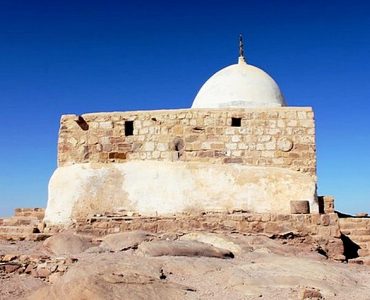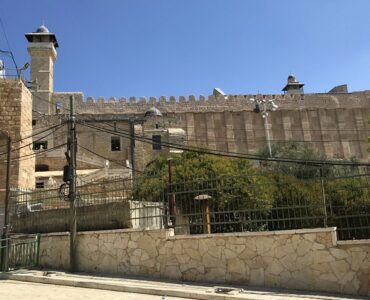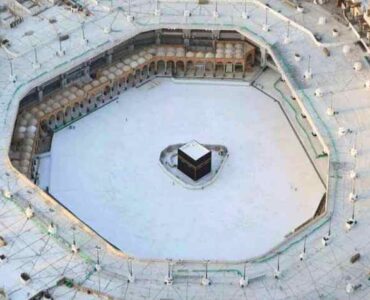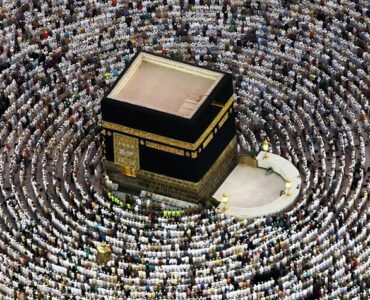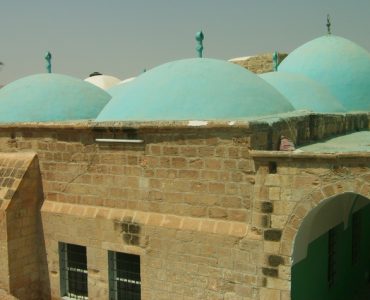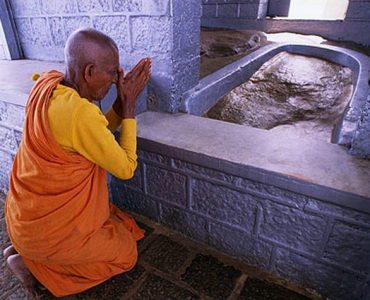The Maqame Ebrahim (Arabic: مقام ابراهيم) refers to the stone on which Ebrahim (عليه السلام) stood on while he was building the Ka’bah. As Ismail (عليه السلام) passed stones to Ebrahim (عليه السلام), and as Ebrahim (عليه السلام) continued laying them in place the Maqame Ebrahim miraculously continued rising higher and higher as the walls rose. Allah (ﷻ) caused the trace of his footprints to remain on the stone as a reminder to the believers among his descendants.
Hadith about the Maqame Ebrahim
- It has been reported from Sa’eed bin Jubair (رضي الله عنه) that the Prophet (ﷺ) said: “The stone is the station of Ebrahim. Allah made it soft and made it a mercy. Ebrahim would stand on it and Ismail would hand the stones up to him.” [Muthir Al-Gharam]
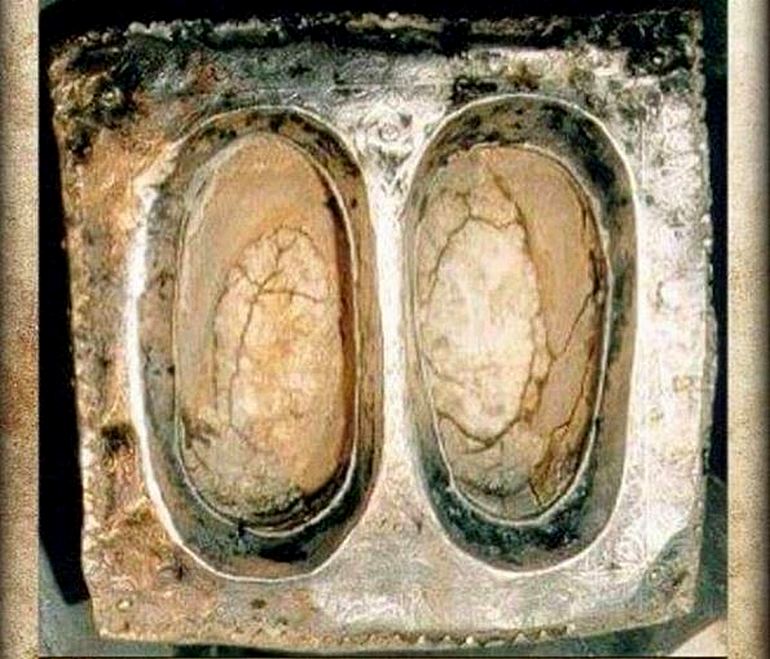

Constructing the Ka’bah
- Ebrahim and Ismail (upon them be peace) used to mention the following Quranic verse as they were constructing the Holy Ka’bah,“Our Lord! Accept (this service) from us: for you are the All-Hearing, The All-Knowing.” [2:127]
- Ebrahim (عليه السلام) constructed the Ka’bah using rocks from five mountains; Hira, Thubayr, Labnaan, Toor and Jabalul Khayr. Toor Seena (Mount Sinai) is actually situated in the eastern desert of Egypt.
- When constructing the Ka’bah, Ebrahim (عليه السلام) would stand on the Maqame Ebrahim barefooted. Over time, his lengthy standing left clear imprints on the stone.
Proclaiming the Pilgrimage
- When Ebrahim (عليه السلام) completed the construction of the Ka’bah he was commanded by Allah (ﷻ): “Proclaim the to Pilgrimage to all people. They will come to you on foot and on every kind of lean camel, emerging from every deep mountain pass (to perform Hajj).” [22:27]
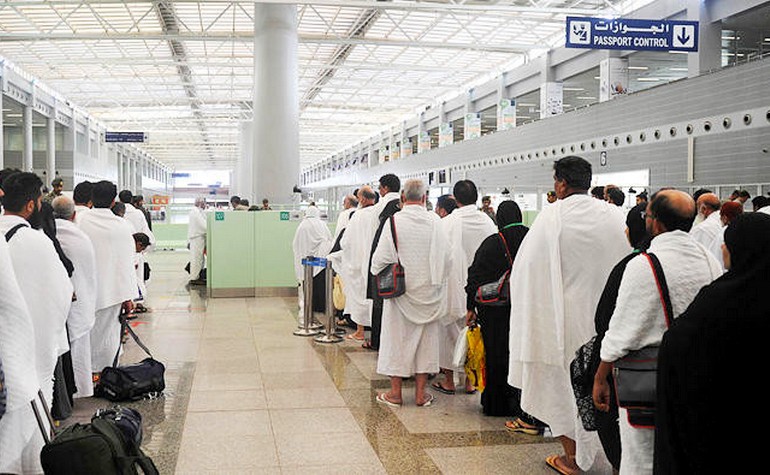

- Ibn Kathir says in his commentary that this verse means: ‘Proclaim (O Ebrahim) the Hajj to the people, calling them to come on pilgrimage to this House which We have commanded you to build’. It was mentioned that he said, “O Lord, how can I proclaim it to the people when my voice does not reach them?” He said, “Call and We will convey it.” So he stood at his Maqam (station) – or according to some narrations on al-Safa, or on mount Abu Qubais – and said: “O people, your Lord has taken a House, so come to it on pilgrimage.”
- And it was said that the mountains lowered themselves so that his voice could reach all parts of the earth and those who were still in the wombs or in men’s loins also heard, and everything that heard him, cities, nomad encampments and trees, and everyone whom Allah has decreed should perform Hajj until the Day of Resurrection responded (saying) “Labbayk Allahumma labbayk (Here I am, O Allah, here I am)”. This is the summary of what was narrated from Ibn Abbas, Mujahid, ‘Ikrimah, Saeed ibn Jubayr and others (رضي الله عنهم).
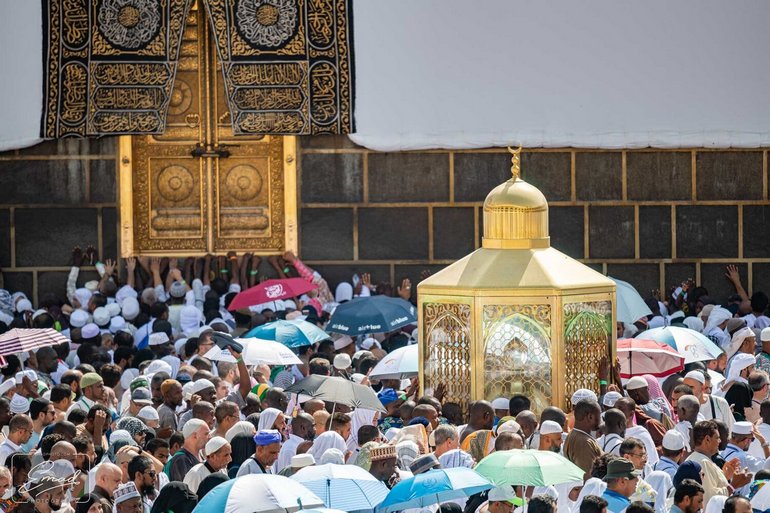

The Maqame Ebrahim as a place for performing salah
- Umar (رضي الله عنه) reports that Allah (ﷻ) fulfilled three wishes that he had. One of these was his proposal to the Prophet (ﷺ) that the Maqame Ebrahim should be made a place for performing salah (prayer). Allah (ﷻ) revealed the following verse in the Quran in Surah al-Baqarah: “Take the Maqam of Ebrahim as a place of salah (a place behind which you perform two rakahs of salah after Tawaf)” [2:125]
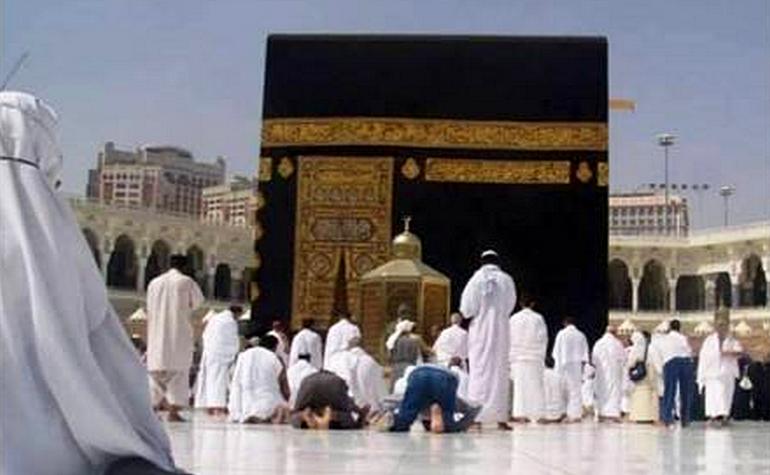

- At the time of Ebrahim (عليه السلام) the Maqam was attached to the Ka’bah. Umar (رضي الله عنه), seeing that leaving it where it was would make the space too crowded for Tawaf or for prayers had it moved on the Mataf to the place it is in now to make it easier for people. There was consensus among the Sahabah for this action of Umar (رضي الله عنه), for he was the one who had suggested it should be taken as a place of prayer.
The footprints of Prophet Ebrahim (عليه السلام)
- Juhm bin Hudhayfah (رضي الله عنه), a Sahabi who was present when the Quraysh rebuilt the Ka’bah as well as when Abdullah bin Zubair (رضي الله عنه) rebuilt it says that the blessed footprints of the Prophet (ﷺ) very closely matches those of Ebrahim (عليه السلام). The Prophet (ﷺ) also mentioned: “From all the children of Ebrahim (عليه السلام) it is I who resembles him the most.” [Bukhari]
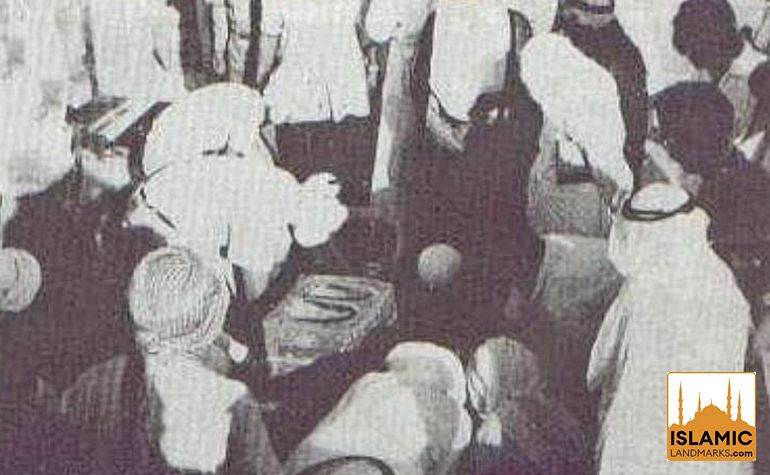

- Although the Arabs worshipped stones during the Period of Ignorance, no one ever worshipped the Hajar al-Aswad or the Maqame Ebrahim even though the Arabs revered them. It appears that it was Allah’s explicit intention to protect the Maqame Ebrahim from Shirk and all types of worship.
- Note that the significance of the Maqame Ebrahim is that it is a place for the performance of salah and not for touching or kissing. When there are lots of people performing tawaf it is better to perform salah some distance away from the Maqame Ebrahim to avoid causing unnecessary inconvenience to others.
The Maqame Ebrahim today
- Currently, the Maqame Ebrahim is enclosed within a gold caged structure with strongly reinforced glass. The actual footprints have now been covered up – a silver alloy case having two deep imprints for feet is now what’s visible. The original footprints which were on top of the rock can no longer be seen.
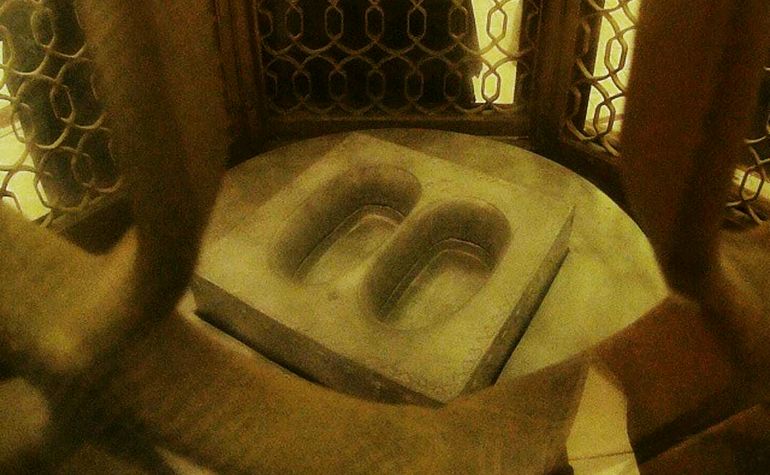

The Maqame Ebrahim used to be housed within a building
- During Ottoman times the Maqame Ebrahim was contained within a small structure on the Mataf. This was removed in the 1960s to ease the flow of worshippers.


References: The History of Makkah – Dr Muhammad Ilyas Abdul Ghani , Holy Makkah – Shaykh Safiur-Rahman Mubarakpuri, Shaykh Yasir Qadhi (Facebook)










